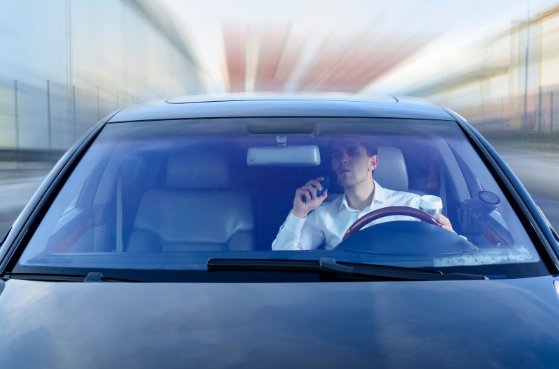The act of rubbernecking—slowing down to gawk at accidents or distractions on the road—has become a noteworthy public safety concern. Though the term originated in the late 1800s as a way to describe eavesdropping, today, it’s more commonly associated with distracted driving. This behavior is as perilous as texting or calling while driving, presenting significant risks to road safety.
Examples of Rubbernecking
Rubbernecking can occur for various reasons, ranging from genuine concern over an accident to sheer curiosity about roadside events. Regardless of the motive, the outcome is detrimental, creating a distracted driving environment that jeopardizes the safety of all road users. Here are some common scenarios where rubbernecking is often observed:
- Traffic Accidents: Drivers slow down to look at car accidents, causing traffic delays and potentially leading to secondary collisions.
- Police Activity: The sight of police officers conducting traffic stops or investigations can distract drivers, leading to unexpected vehicle maneuvers.
- Roadside Attractions or Events: Attractions, demonstrations, or unusual advertisements along the road can captivate drivers’ attention, disrupting the flow of traffic.
- Natural Disasters and Weather Phenomena: The occurrence of wildfires, floods, or extreme weather conditions can distract drivers who try to observe or document these events.
- Construction Sites: The presence of construction activity and machinery can divert drivers’ focus from the road, increasing the risk of accidents.
Legal Implications
While rubbernecking isn’t directly illegal, it can fall under laws against impeding traffic. More critically, if rubbernecking leads to an accident, the distracted driver could be held liable for damages and injuries incurred, highlighting the legal risks associated with this behavior.
Impact on Traffic and Safety
Rubbernecking significantly contributes to traffic congestion and accidents. Studies suggest that nearly one-fifth of all car accidents can be traced back to this form of distracted driving. This behavior not only causes unnecessary traffic jams but also increases the risk of collisions, making it a major road safety hazard.
The Importance of Avoidance
The reasons to avoid rubbernecking are compelling. Beyond the immediate danger of causing an accident, rubbernecking exacerbates traffic issues and disrespects the privacy and dignity of those involved in accidents. It’s a behavior that undermines the safety and efficiency of our roadways.
Strategies to Mitigate Rubbernecking
Law Enforcement and Regulatory Approaches
The potential for stricter laws against rubbernecking or impeding traffic could deter drivers from engaging in this behavior. Furthermore, setting up screens around accident sites has been an effective measure in some countries, preventing drivers from viewing the scene and reducing the urge to slow down.
Public Awareness and Education
Educational campaigns highlighting the dangers of rubbernecking and promoting responsible driving habits are essential. Informing drivers about the risks and consequences of distracted driving can encourage more attentive behavior on the roads.
Technological Solutions
Advancements in vehicle technology, such as driver assistance systems, can help prevent distracted driving. These innovations are crucial in the fight against rubbernecking, offering tools to keep drivers focused on the road ahead.
Summary
Rubbernecking poses a significant threat to road safety, contributing to accidents, traffic jams, and even fatalities. By understanding the risks associated with this behavior and taking steps to mitigate its occurrence, we can work towards safer roads for everyone. It is incumbent upon drivers, lawmakers, and the community at large to address this issue head-on, ensuring that curiosity does not compromise safety. Let’s commit to keeping our eyes on the road and our hands on the wheel, making our journeys safer for all.
FAQs on Rubbernecking: Dangers of Distracted Driving
Can rubbernecking affect my insurance rates?
Yes, rubbernecking can indirectly affect your insurance rates. If rubbernecking leads to an accident and you’re found at fault, this can result in claims that may increase your insurance premiums. Insurance companies consider your driving record when calculating rates, and incidents that suggest risky driving behavior, like accidents due to distracted driving, can lead to higher premiums.
Are there any psychological reasons behind rubbernecking?
Yes, psychological factors play a significant role in rubbernecking. Humans possess a natural curiosity about unusual events, which can compel them to observe accidents or other roadside incidents. This curiosity, coupled with a desire for novelty and information, can override rational decision-making processes, leading to rubbernecking behavior despite known risks.
Get the right coverage for your car with tutenagency
New tutenagency customers?
Quote auto insurance online or call (334) 502-5111 to insure your vehicle.
Disclaimer: This content is for informational purposes only and should not be considered legal or financial advice. Always consult with qualified professionals in legal and financial fields before making any decisions.

